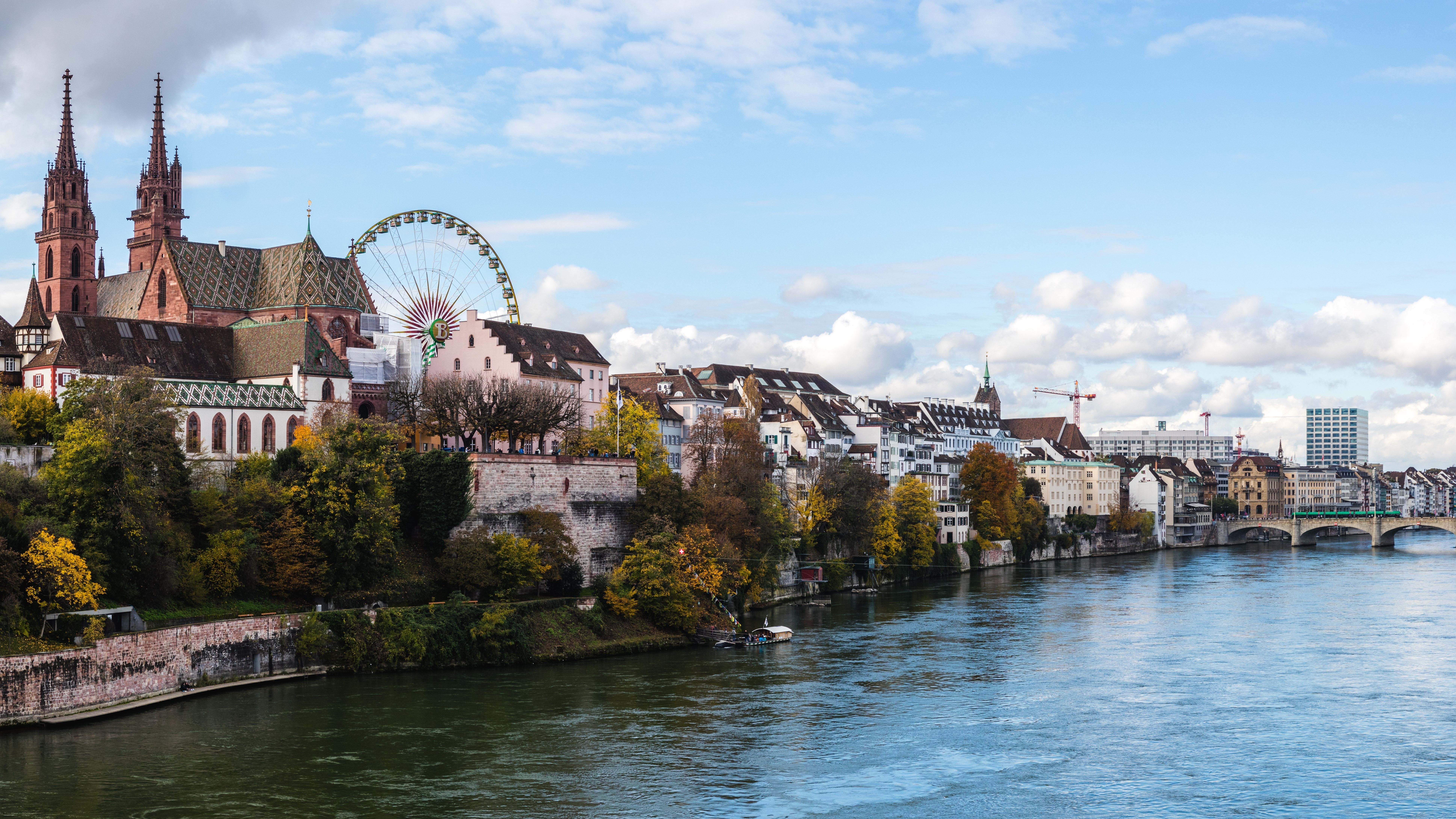
Pharmaceutical industry at the Rhine knee - Earthquake zone or landmark of Basel?
Author: Pascal Hänggi
Before the „Die drey scheeenschte Dääg“ in Basel begins, we look at pharmaceutical industry on the other 363 days of this year, and if the next “Urknall” might be at the Rhein and not the Reuss.
The pharmaceutical industry sets landmarks in the area of Basel
Switzerland is one of the world's most important centres for the pharmaceutical industry. The Basel area is home to many global pharmaceutical companies. It is not only the two leading companies, Roche and Novartis, that have shaped the city and its urban landscape with the high-calibre architecture of Diener & Diener, Frank O. Gehry or the two tall towers by Herzog & de Meuron.
The Rhine knee becomes a pillar of the economy
The life sciences sector in the Basel region is not just made up of the two big players. In addition to the pharmaceutical industry, with companies such as Lonza and Basilea Pharmaceutical, the Rhine knee is also home to many MedTech and biotech R&D companies. The life sciences sector accounts for around 10% of all jobs in the region, of which almost 90% are in pharmaceutical companies. More than 60% of all employees in the pharmaceutical industry in Switzerland work in the Basel region. This underlines the importance of the sector for the Basel region and for Switzerland as a whole.
"Seismic risk” due to the importance of the life sciences sector
Earthquakes in Switzerland are caused by large-scale continental movements and plate collisions. The occurrence of earthquakes cannot be predicted. According to the Federal Office for the Environment, earthquakes can occur anywhere in Switzerland. On average, the earth in Switzerland shakes about 500 to 800 times a year, but only 10 to 15 of these earthquakes with a magnitude >2.5 can be felt by humans. The risk is mainly concentrated in large urban centres due to the dense population and high property values. The Basel area is particularly vulnerable to earthquakes.
The risk in the pharmaceutical industry is similar to that of earthquakes. The dynamic life sciences sector is in a constant state of flux. Acquisitions, restructuring, downsizing and investment are all taking place. There are many small tremors and only a few big ones, such as the Idorsia tremor in July 2023, which cost up to 500 jobs, or Roche's investment of 1.2 billion Swiss francs in a new research and development building, a new production building, and a novel Institute for Human Biology with around 250 new jobs.
Highly skilled workforce in demand
For R&D-intensive sectors, a skilled, tertiary-educated workforce is particularly important and an indicator of the competitiveness and innovative capacity of an economy. Measured by the proportion of tertiary-educated workers, the life sciences industry's tertiary-education rate of 56% is well above the Swiss average of around 40%. This high rate means that talent in the pharmaceutical industry is highly sought after and well paid. It is not just since the coronavirus crisis and digitalization that companies have been courting skilled workers. Attracting and retaining good candidates for new roles has become even more challenging. Fewer people are willing to take the risk of leaving a secure job in search of a new challenge. This shortage means that professionals can afford to be selective.
International Life Sciences Industry
The international nature of the life sciences sector, particularly the triangle formed by the three countries bordering the Rhine knee, should not be forgotten. The first railway train symbolically crossed the Swiss border from France to Basel on 15 June 1844. A year and a half later, Switzerland's first official railway station opened. It was built on the site of today's Biozentrum of the University of Basel. This highly symbolic event is still reflected in the life sciences sector today. Talented people from all over the world come to Basel, a top research centre. A passport alone is not enough for C-level and board positions.
In Basel, distances are short & Roche and Novartis are close by
Over the years, billions have been invested in expanding the industrial hub of the city on the Rhine knee. According to Jürg Erismann, Head of Roche's Basel site, Roche continues to see major advantages in having the entire value chain, from early development to the finished production and marketing of medicines, represented at its headquarters. "Distances are short in Basel," he says. It is still common for people to spend at least three out of five working days in the office, despite the growing popularity of working from home. The political initiative to reuse the Novartis car park on the Horburg site should therefore not be interpreted as a crisis in the pharmaceutical industry, but rather as a better use of scarce land in the small canton of Basel-Stadt.
Many small and few large quakes
Because the life sciences industry, like an earthquake risk model, is a very dynamic environment that is constantly changing around the world, it is difficult to accurately predict the future. Ten years ago, AI in diagnostics and CRISPR/Cas9 genome editing therapy were virtually unheard of. Today, the first clinical trials are underway. This shows how innovative and adaptable the pharmaceutical industry is far beyond Novartis and Roche, and that companies, teams and boards will face many challenges in the years ahead. It covers everything from job cuts to new drug approvals. Economic fluctuations (small earthquakes) are part of it, and the architectural landmarks will remain for a long time.
